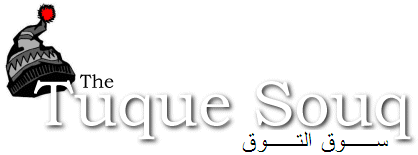It had to be high on the list of places to visit in Iceland: Eyjafjallajökull, the ice cap and eponymous volcano that just a year ago erupted with more fury than a stampede of sheep, spewing clouds of ash across Europe and sending air-traffic controllers on a long-sought holiday (by train, of course).
How could one visit the land of jökulls and not deposit a soft, black footprint on the slopes of this tongue twister ("aye, if yet, la yokel"), if only to ensure that, at least at one particular moment, nature has relaxed its cycle of self-correction long enough for us humans to venture out of our caves?
In Iceland the natural world certainly has a way of reminding us not to take it for granted. Maybe it's the way the sun always seems so distant, at a languid low angle, as though Terrence Malick is in control of the lighting. Maybe it's in the wind, which blows up, down, warm, cold, east and west, seemingly all at once. Maybe it's the absence of trees, a taut lesson that what goes down doesn't always come back up.*
Or maybe it's the way those infamous volcanoes keep all but the most brennevín-sodden of Icelanders (and the rest of us) continually on their toes.
Thus, climbing up and setting foot on Eyjafjallajökull is sort of the human way of letting nature know that, hey, point taken.
Last year a small chunk of the world fumed right back at the Icelandic volcano, angrily protesting the flight delays and the soporific haze drifting through all that clean, human air. But in fact, the eruption of Eyjafjallajökull (c'mon, you can say it) was one of the drowsiest by Icelandic standards.
If you want to talk about devastation, look no further than Lakagígar, the largest volcanic eruption in history.** In the summer of 1783 this twenty-five-kilometre long hole in the Earth exploded, darkening the skies of the world, blighting harvests, decimating flora and fauna, emitting rivers of fire and clouds of poisonous sulfuric gas continuously for eight months.
Lakagígar was so colossal it lowered the mean atmospheric temperature of the planet by nearly five degrees Celsius over a year. Its devastation of crop and livestock in Iceland was responsible for the deaths of 10,000 inhabitants; one-fifth of the entire population at the time. It also got me an A in freshman-year volcanology.***
Being that the deadly Icelandic eruption that caused Benjamin Franklin to posit an early theory of the delicate relationship between atmospheric composition and climate change also got me through that rough first year of university, I'd have been remiss if I didn't pay homage to this volcano, too.
Iceland is like nature's geological laboratory, an open-air museum of Earth's majestic, barely comprehensible dynamism dedicated singularly to making us feel very, very insignificant. A simple footprint is a supreme act of reverence. Point taken, world. I'll never complain about a delayed flight again.
* Just as Jared Diamond foretold.
** By volume of effluent, not by number of flights cancelled.
*** That course, Geosciences 1303, is still offered. Also, the grade was actually an A-minus, which is to an A what Eyjafjallajokull is to Lakagigar; differently uttered but similarly impressive from the vantage of something small, like a bee.
How could one visit the land of jökulls and not deposit a soft, black footprint on the slopes of this tongue twister ("aye, if yet, la yokel"), if only to ensure that, at least at one particular moment, nature has relaxed its cycle of self-correction long enough for us humans to venture out of our caves?
In Iceland the natural world certainly has a way of reminding us not to take it for granted. Maybe it's the way the sun always seems so distant, at a languid low angle, as though Terrence Malick is in control of the lighting. Maybe it's in the wind, which blows up, down, warm, cold, east and west, seemingly all at once. Maybe it's the absence of trees, a taut lesson that what goes down doesn't always come back up.*
 |
| Terrence Malick was here. |
Thus, climbing up and setting foot on Eyjafjallajökull is sort of the human way of letting nature know that, hey, point taken.
 |
| The ice and volcanic dunes of Eyjafjallajokull, 13 September 2011. |
If you want to talk about devastation, look no further than Lakagígar, the largest volcanic eruption in history.** In the summer of 1783 this twenty-five-kilometre long hole in the Earth exploded, darkening the skies of the world, blighting harvests, decimating flora and fauna, emitting rivers of fire and clouds of poisonous sulfuric gas continuously for eight months.
Lakagígar was so colossal it lowered the mean atmospheric temperature of the planet by nearly five degrees Celsius over a year. Its devastation of crop and livestock in Iceland was responsible for the deaths of 10,000 inhabitants; one-fifth of the entire population at the time. It also got me an A in freshman-year volcanology.***
Being that the deadly Icelandic eruption that caused Benjamin Franklin to posit an early theory of the delicate relationship between atmospheric composition and climate change also got me through that rough first year of university, I'd have been remiss if I didn't pay homage to this volcano, too.
Iceland is like nature's geological laboratory, an open-air museum of Earth's majestic, barely comprehensible dynamism dedicated singularly to making us feel very, very insignificant. A simple footprint is a supreme act of reverence. Point taken, world. I'll never complain about a delayed flight again.
* Just as Jared Diamond foretold.
** By volume of effluent, not by number of flights cancelled.
*** That course, Geosciences 1303, is still offered. Also, the grade was actually an A-minus, which is to an A what Eyjafjallajokull is to Lakagigar; differently uttered but similarly impressive from the vantage of something small, like a bee.



No comments:
Post a Comment